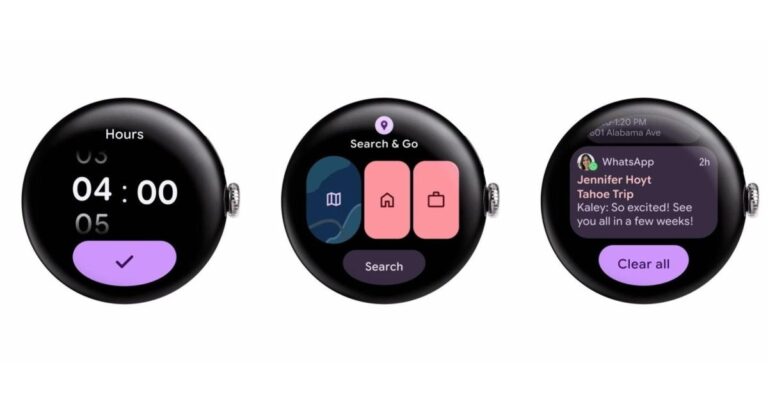Google Introduces Material 3 Expressive for Wear OS
Google is set to enhance the user experience on Wear OS with the anticipated rollout of Material 3 Expressive, scheduled for later this year. Although the official launch is still a few months away, Google has already begun updating various apps and Tiles to integrate this exciting new design language.
Embracing Curved Displays
A key feature of Material 3 Expressive is its design philosophy, which embraces the aesthetic of round screens found in smartwatches. The UI elements are crafted to “hug the display,” ensuring a cohesive look. For instance, arc-shaped buttons located on the outer edges of the screen exemplify this design approach, making interactions more intuitive for users.
Enhanced User Interaction
Users of the Pixel Watch have already spotted these updates on Google Calendar Wear OS Tiles, specifically in the “Next Event” and “Next Tasks” sections. These new arc-shaped buttons offer a more significant touch target, a noticeable upgrade from the previously smaller pill-shaped buttons, enhancing the overall usability of the interface.
Visual Transformations
Old vs. New Design

With the latest update, users will notice that Google Calendar for Wear OS has officially transitioned to version 2025.18.1. However, while some design elements are visible, the new Material 3 Expressive buttons have not yet fully rolled out across all devices, indicating a likely phased server-side rollout by Google.
The Future of Wear OS Design
Material 3 Expressive is set to make its debut on the Pixel Watch later this year, but the changes are already underway for various applications. Overall, there is a promise of denser Wear OS Tiles that will showcase more information and provide richer layouts, ultimately improving user engagement through a more vibrant and functional interface.
Gallery of Updates

Stay Updated
As Google continues to roll out these enhancements, users are encouraged to remain engaged with the latest updates on Wear OS. The integration of Material 3 Expressive design elements promises a more user-friendly experience, ensuring that smartwatches remain an essential tool in managing daily tasks and schedules.
Conclusion
With the upcoming changes in Wear OS, Google is setting the stage for a transformative experience that merges aesthetics with functionality. As users wait for the full rollout of Material 3 Expressive, the early glimpses provide excitement for the future of smartwatch design.
This structured article emphasizes the upcoming Material 3 Expressive design for Wear OS, utilizing a clear hierarchy of headings, relevant keywords, and informative content to engage readers effectively.
